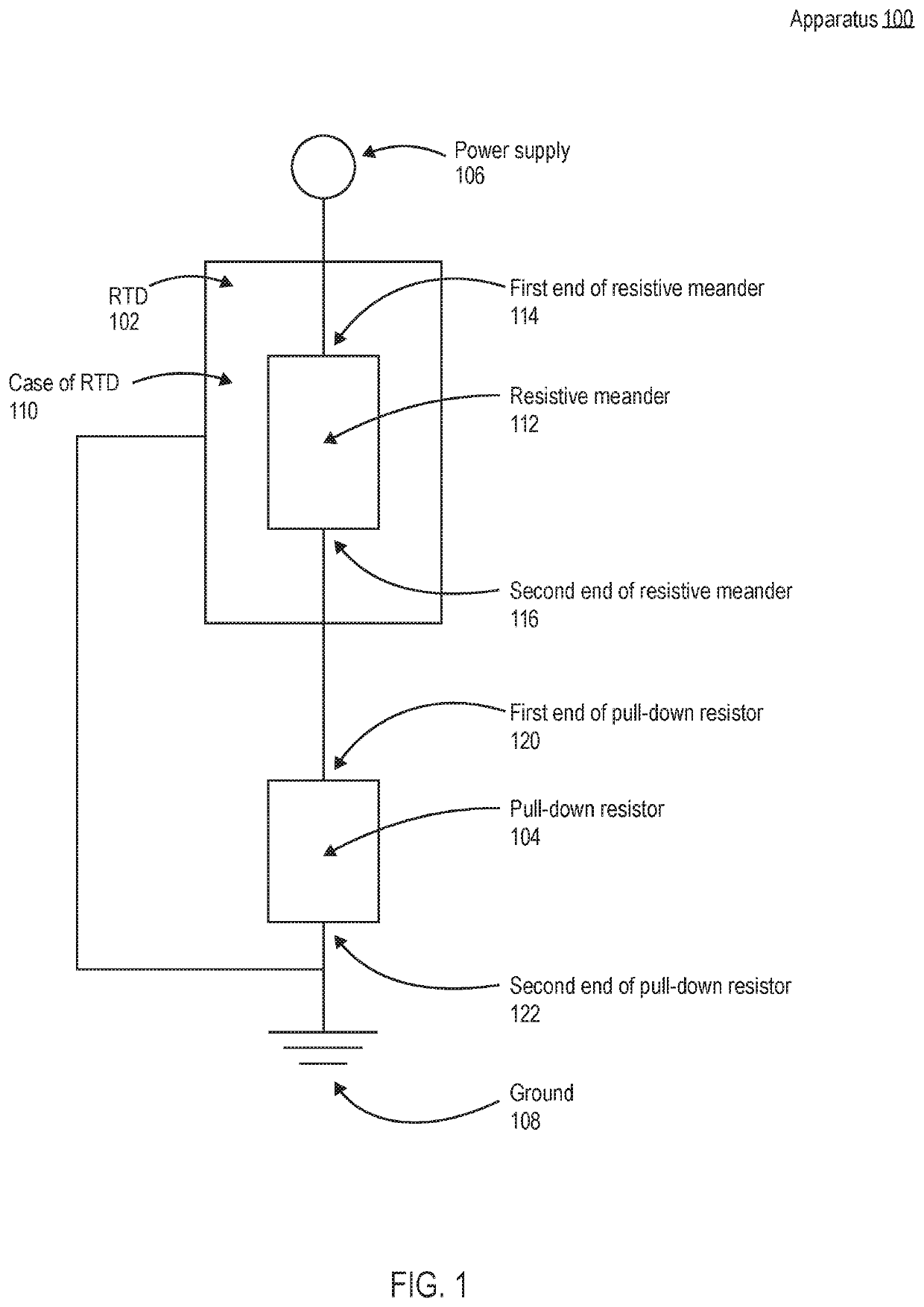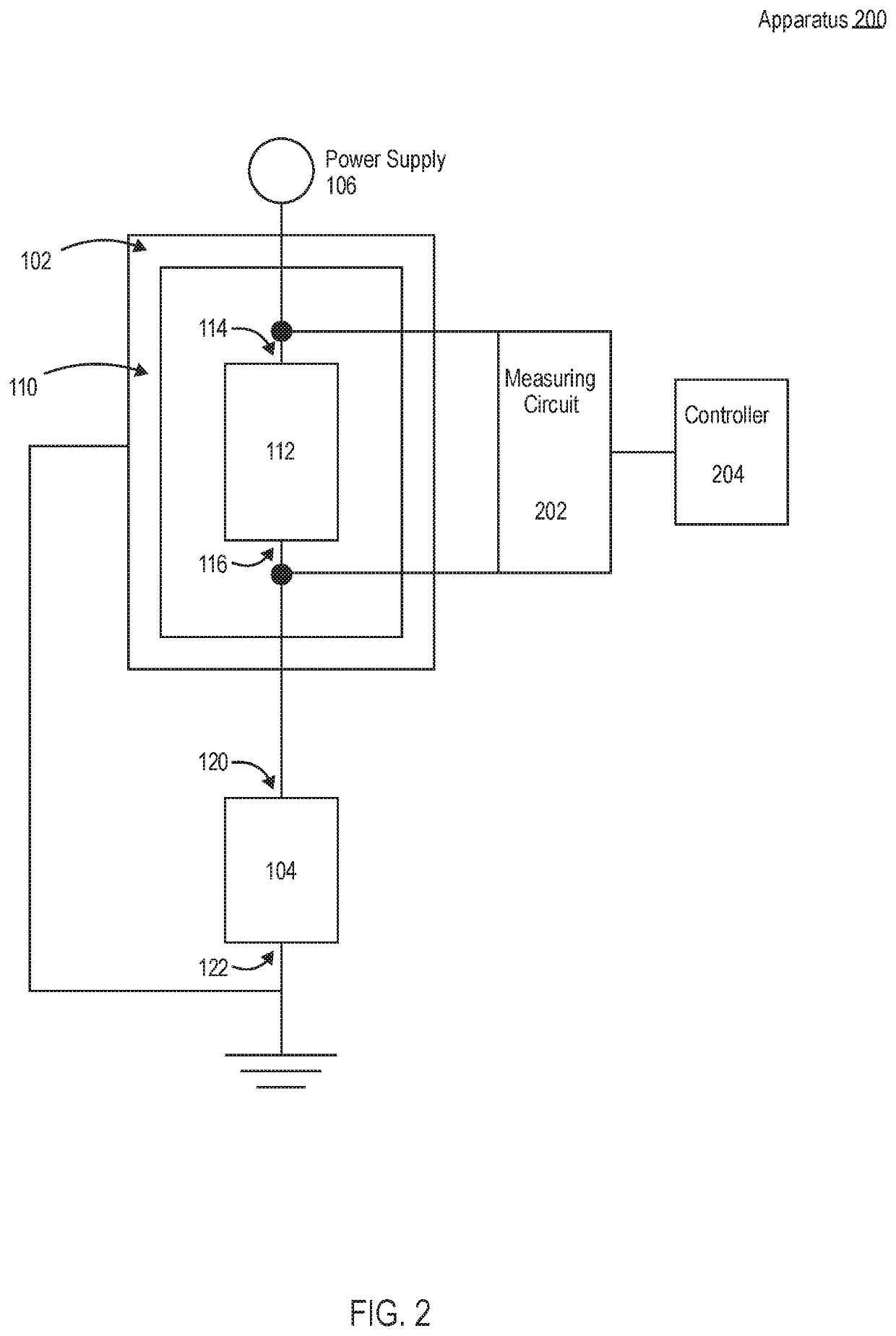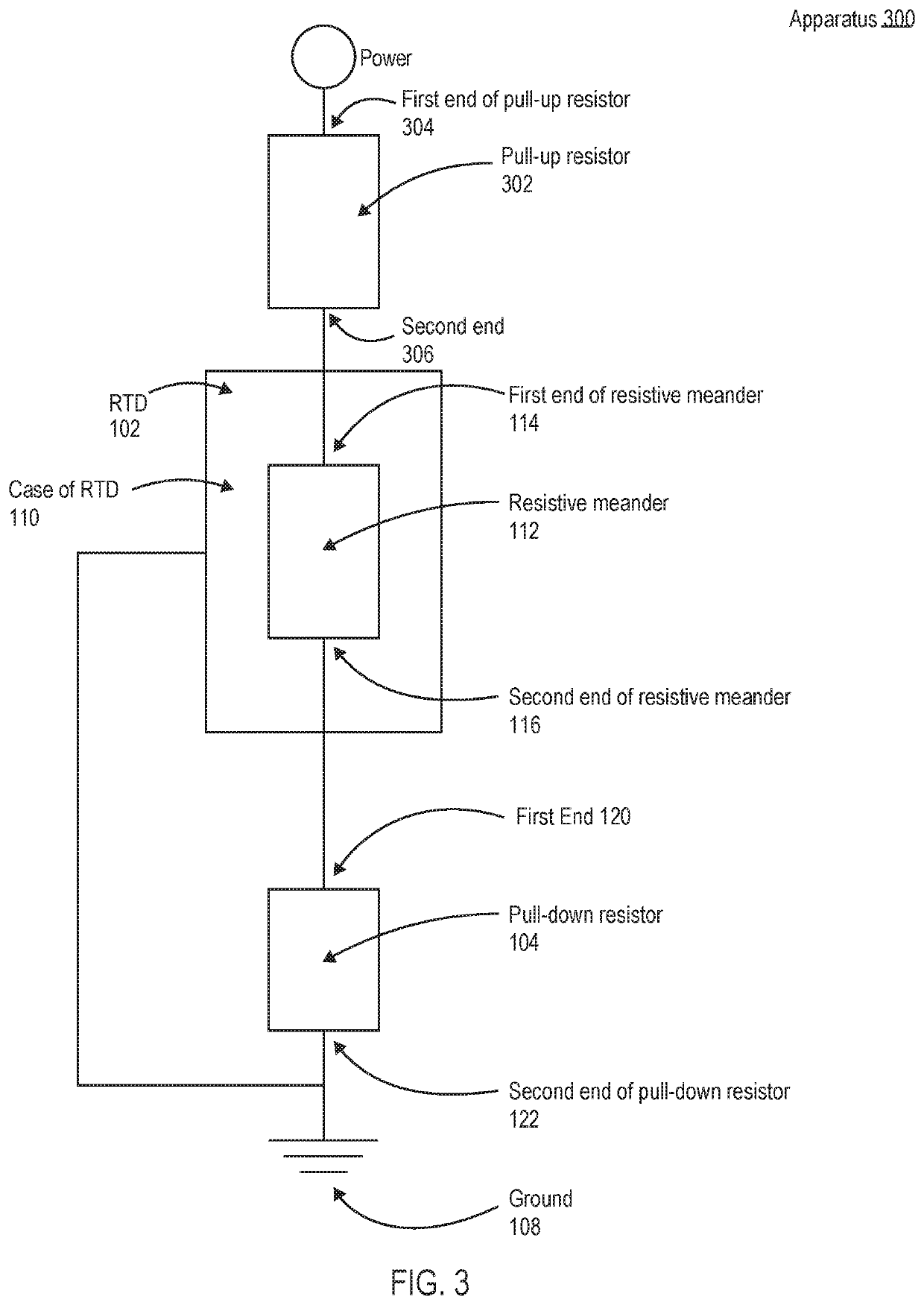Stability of a resistance temperature detector
a temperature detector and stability technology, applied in the field of electric circuits, can solve the problems of affecting the stability or drift of a thin-film rtd, the type of rtd being prone to stress-induced resistance change, and the coils of the sensing element being susceptible, etc., to achieve the effect of improving the stability of the rtd
- Summary
- Abstract
- Description
- Claims
- Application Information
AI Technical Summary
Benefits of technology
Problems solved by technology
Method used
Image
Examples
Embodiment Construction
[0024]The present disclosure describes apparatuses and methods for improving the stability of a resistance temperature detector (RTD). As explained above, the stability or drift in the temperature resistance relationship of an RTD may be impacted by contamination of a resistive meander of the RTD during production or use of the RTD. Another common cause of drift is due to low resistance of the insulators. As will be described in detail below, according to embodiments of the present disclosure, an apparatus having an RTD may be configured with a pull-down resistor such that when power is provided to the apparatus, the voltage potential of the resistive meander is higher than the case of the RTD. Because the voltage potential of the RTD's resistive meander is higher than the case of the RTD, foreign matter having a positive charge (e.g., sodium ions) will move away from the resistive meander and towards objects with a lower charge, such as the ground and the case of the RTD. As explai...
PUM
| Property | Measurement | Unit |
|---|---|---|
| resistance | aaaaa | aaaaa |
| resistance | aaaaa | aaaaa |
| resistance | aaaaa | aaaaa |
Abstract
Description
Claims
Application Information
 Login to View More
Login to View More - R&D
- Intellectual Property
- Life Sciences
- Materials
- Tech Scout
- Unparalleled Data Quality
- Higher Quality Content
- 60% Fewer Hallucinations
Browse by: Latest US Patents, China's latest patents, Technical Efficacy Thesaurus, Application Domain, Technology Topic, Popular Technical Reports.
© 2025 PatSnap. All rights reserved.Legal|Privacy policy|Modern Slavery Act Transparency Statement|Sitemap|About US| Contact US: help@patsnap.com



